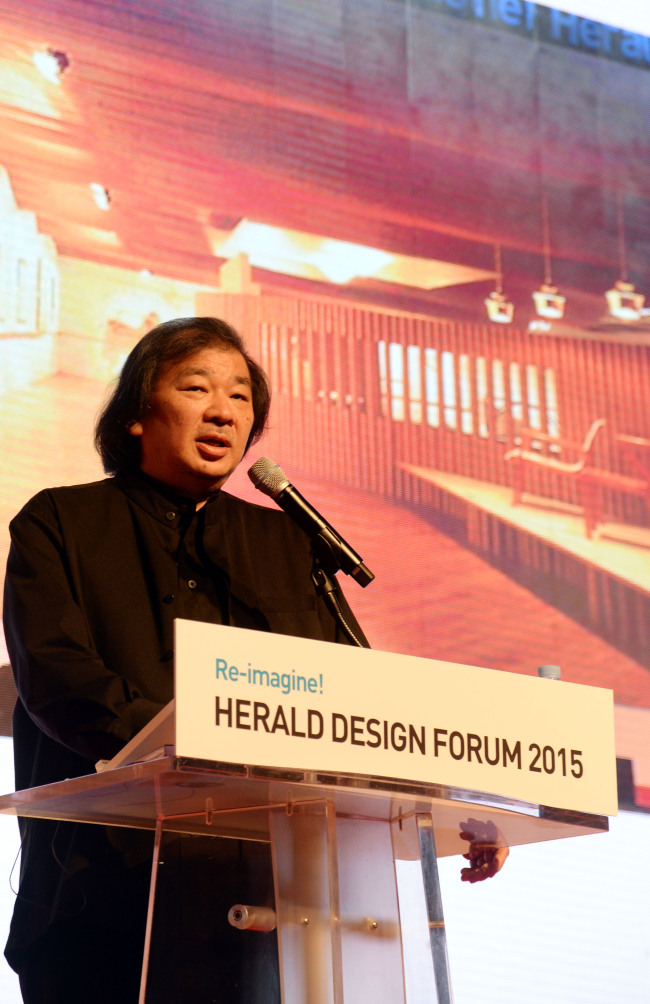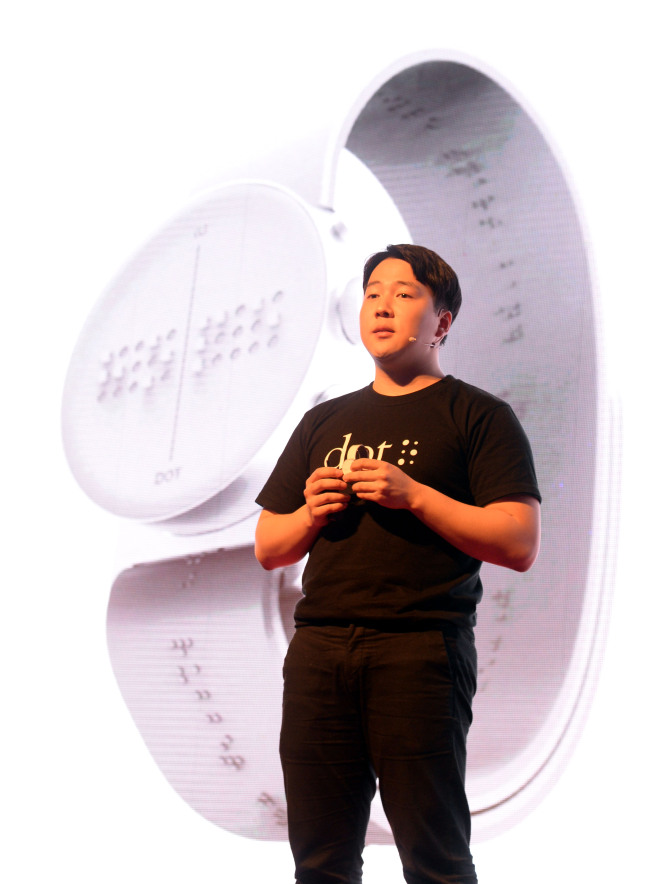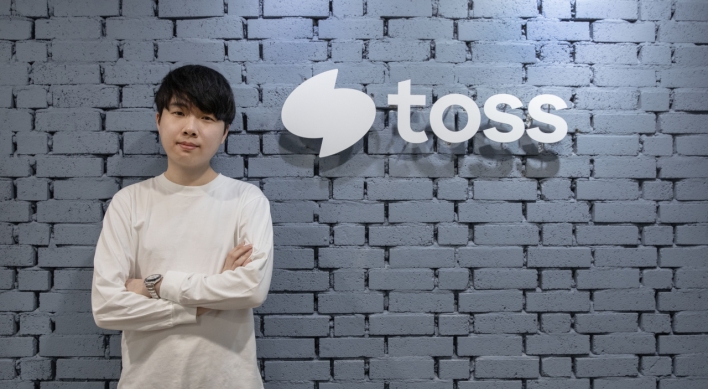Designers have used innovative thinking to bring changes in every aspect of life. But changes they bring often fail to reach the underprivileged, creating an ever-widening gap in benefits to different sections of society.

Japanese architect Shigeru Ban and young Korean entrepreneur Kim Ju-yoon have turned to those who remain on the sidelines of design-led innovations, or a technology-driven life. They shared their stories of finding solutions for their chosen communities in the second session, “Design, A Channel of Sharing Value,” at the Herald Design Forum 2015 on Tuesday in Seoul.
Ban has been well-known for his disaster relief efforts, combined with his unique architectural innovation. The architect has been designing and providing temporary shelters made with unconventional architectural materials such as paper tubes, cardboard, beer crates and other recycled materials for people who lost their homes in natural disasters or civil wars. His disaster relief efforts earned him numerous awards, including the prestigious Pritzker Architecture Prize in 2014.
“Power and money is invisible and developers hire us to visualize their power and money through architecture. I thought I would like to use my experience and knowledge for people who lost their houses in natural disasters,” said Ban.
His humanitarian work goes back to the 1994 Rwandan civil war, which displaced more than 2 million people. He designed emergency shelters for displaced Rwandan refugees with paper tubes that supported temporary tents for a cost of only $15 per unit.
In 1995, he provided temporary shelters, again with paper tubes and cardboard, for people affected by the 1995 earthquake in Kobe, Japan, which killed more than 6,000 people.
He has continued to build temporary shelters for people who have lost their homes in many natural disaster-hit areas, including in the Philippines, Sri Lanka, New Zealand and Nepal.
The session was shared by young Korean entrepreneur Kim Ju-yoon, CEO of Dot, a Seoul-based smartwatch maker for the blind.

Kim, 25, has been in the media spotlight with the first braille smartwatch designed for the blind even before its release. The watch is expected to officially be released next year.
Kim discovered the blind are discriminated against in information accessibility from his visually impaired friend. He interviewed more visually impaired people and found that most of them give up learning braille because of the lack of braille-assisted devices. He noted that there has hardly been any change in the development of existing assistive devices that translate online content to braille, which cost anywhere from $3,000 to $15,000.
“I thought there are so many innovations happening, why don’t we use that to change the lives of visually impaired people?” Kim said.
The “dot” smartwatch, which comes at an affordable price of $290, shows braille on the screen through which blind people can access various texts, such as messages and tweets anytime and anywhere. The company is planning to develop a smart braille pad on which the blind can read longer texts and even study mathematics and draw graphics, and further apply the technology to public transportation system and ATM machines.
“I believe what we do can make the world a better place,” Kim said.
By Lee Woo-young (wylee@heraldcorp.com)


![[AtoZ into Korean mind] Humor in Korea: Navigating the line between what's funny and not](http://res.heraldm.com/phpwas/restmb_idxmake.php?idx=644&simg=/content/image/2024/04/22/20240422050642_0.jpg&u=)


![[Herald Interview] Why Toss invited hackers to penetrate its system](http://res.heraldm.com/phpwas/restmb_idxmake.php?idx=644&simg=/content/image/2024/04/22/20240422050569_0.jpg&u=20240422150649)
![[Graphic News] 77% of young Koreans still financially dependent](http://res.heraldm.com/phpwas/restmb_idxmake.php?idx=644&simg=/content/image/2024/04/22/20240422050762_0.gif&u=)



![[Exclusive] Korean military set to ban iPhones over 'security' concerns](http://res.heraldm.com/phpwas/restmb_idxmake.php?idx=644&simg=/content/image/2024/04/23/20240423050599_0.jpg&u=20240423171347)



![[Exclusive] Korean military to ban iPhones over security issues](http://res.heraldm.com/phpwas/restmb_idxmake.php?idx=652&simg=/content/image/2024/04/23/20240423050599_0.jpg&u=20240423171347)



![[Today’s K-pop] Ateez confirms US tour details](http://res.heraldm.com/phpwas/restmb_idxmake.php?idx=642&simg=/content/image/2024/04/23/20240423050700_0.jpg&u=)